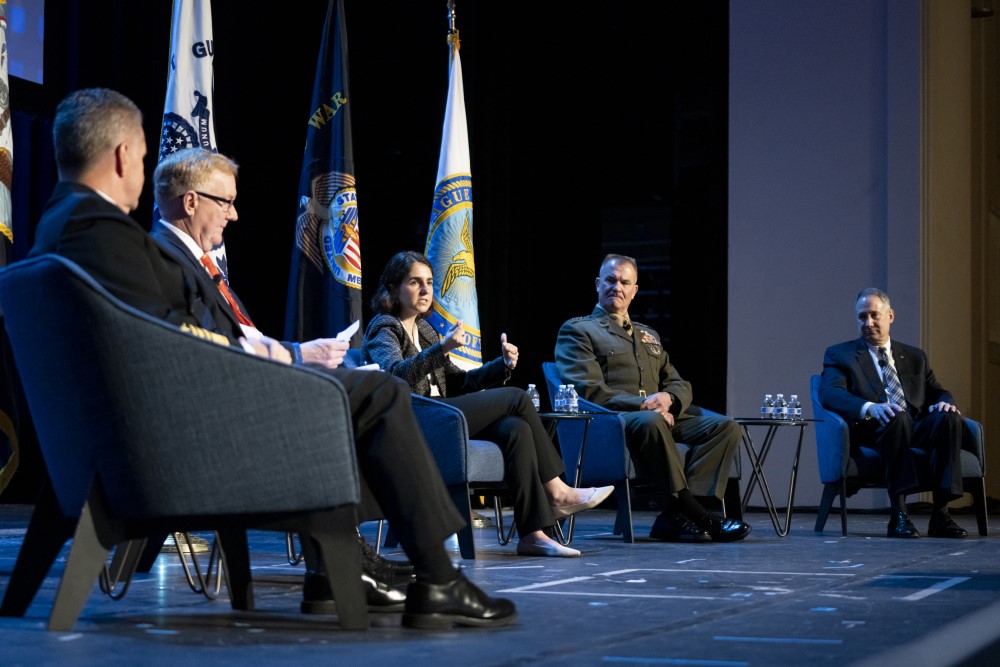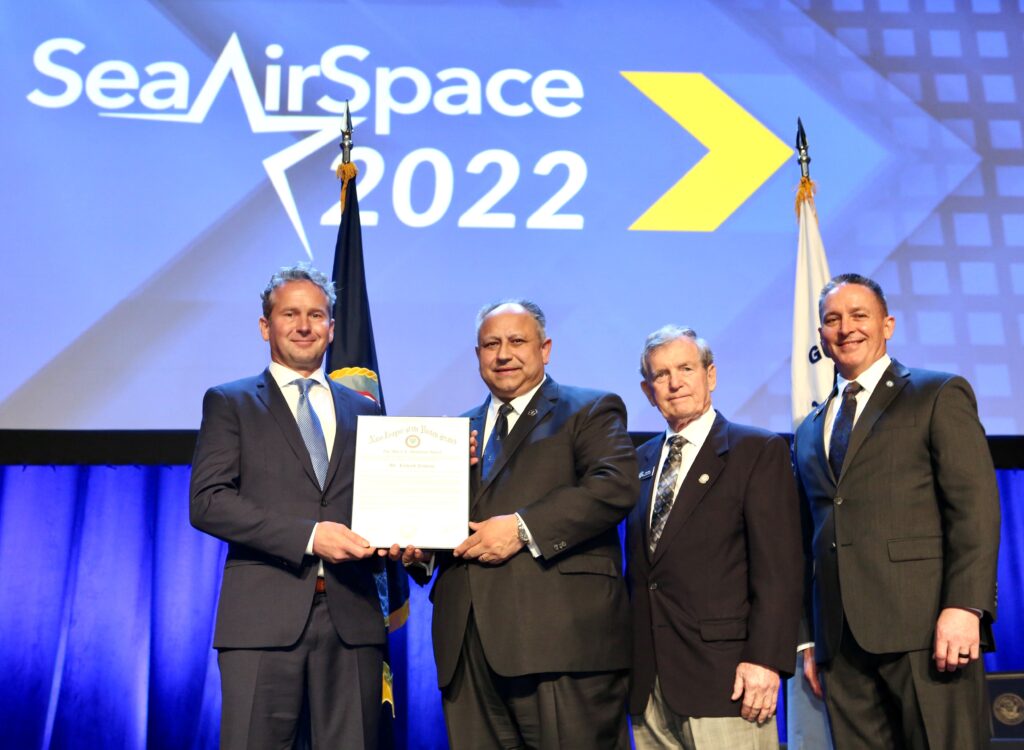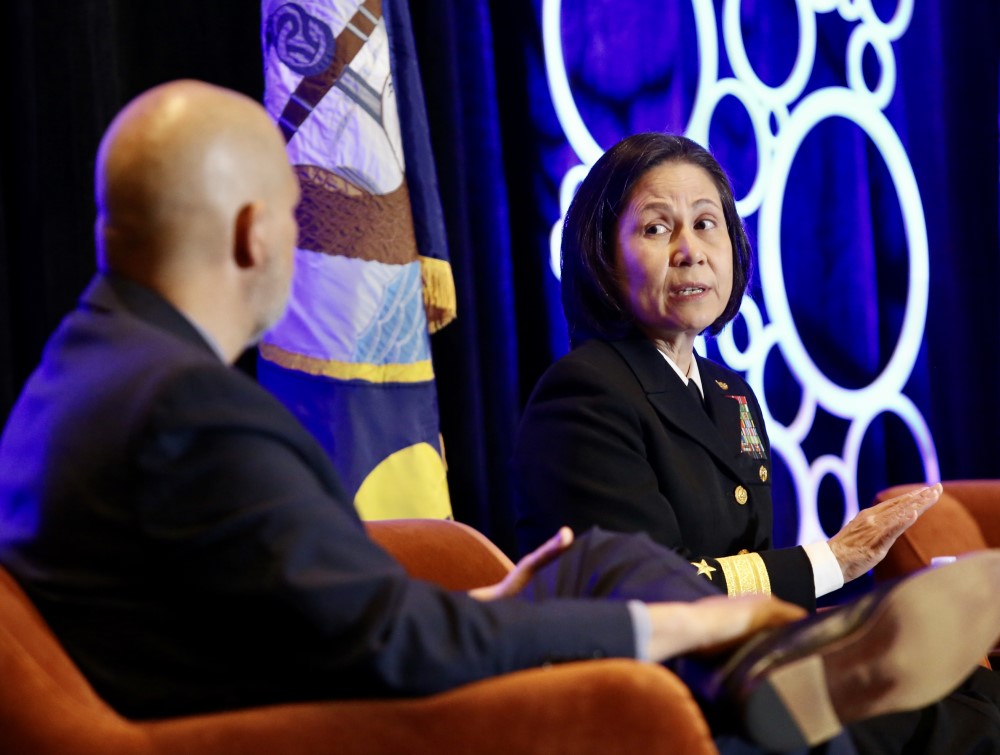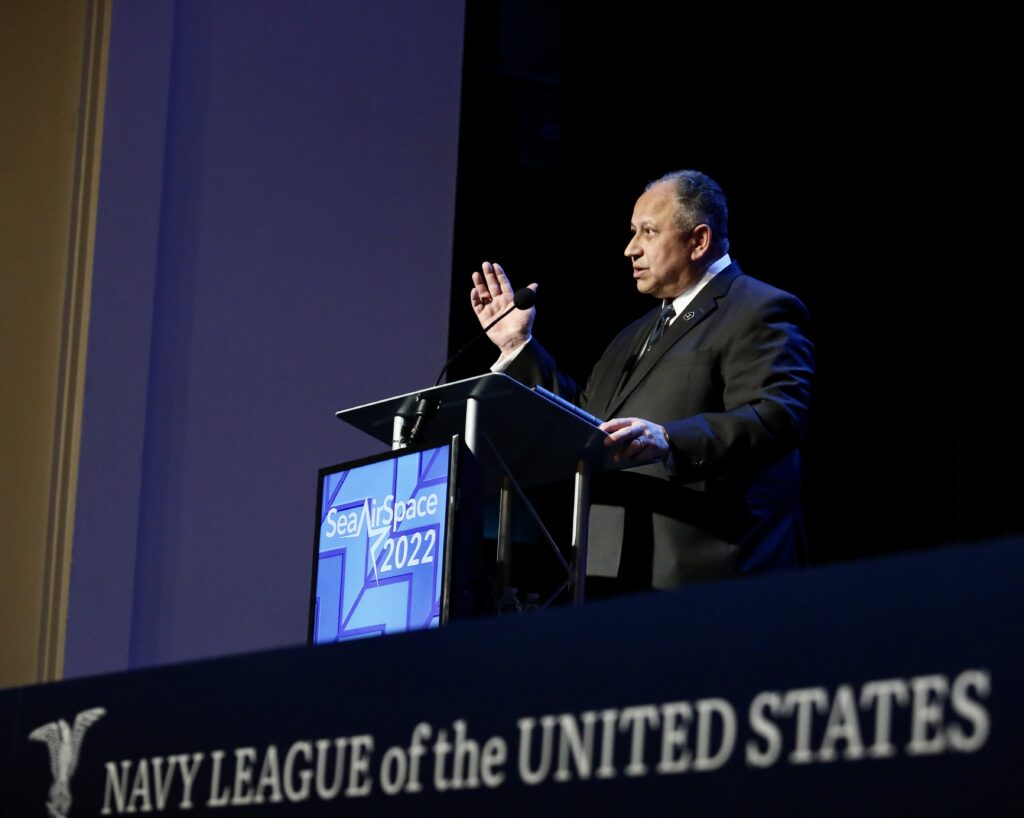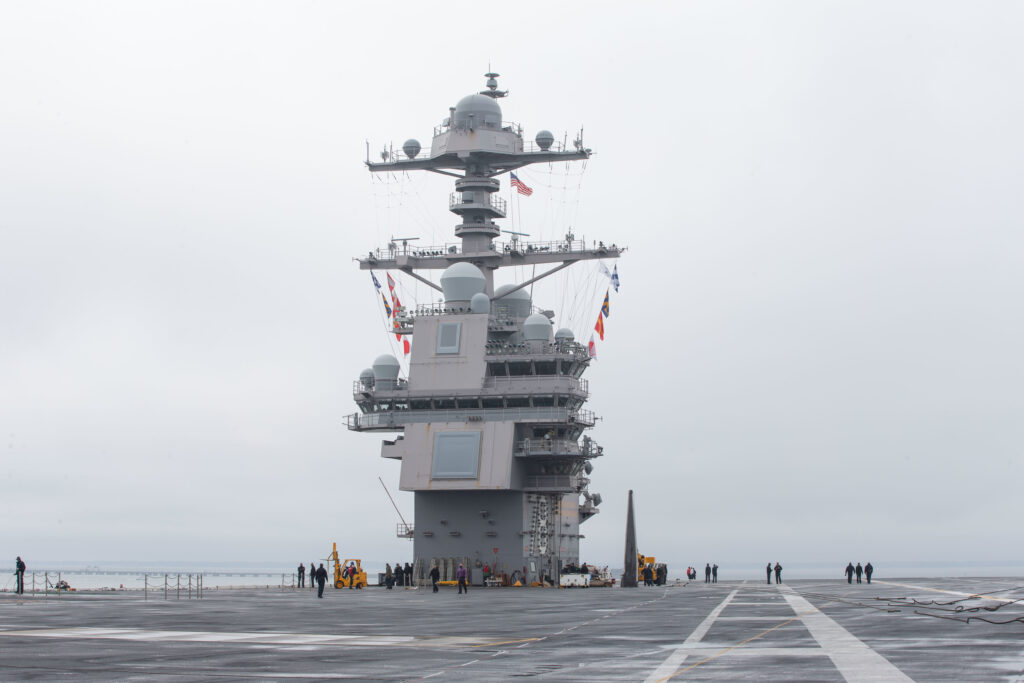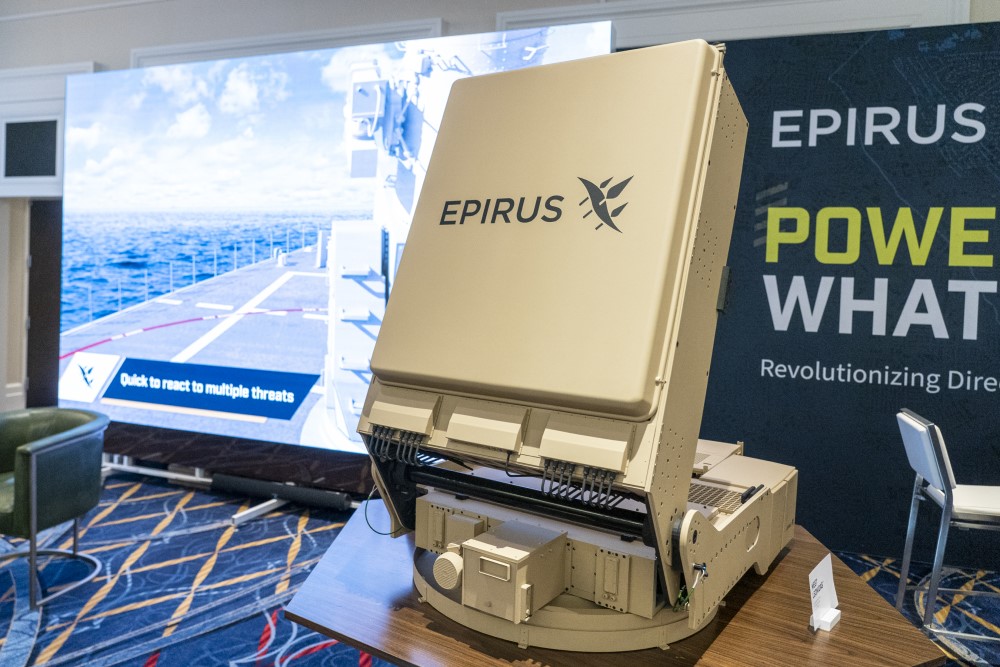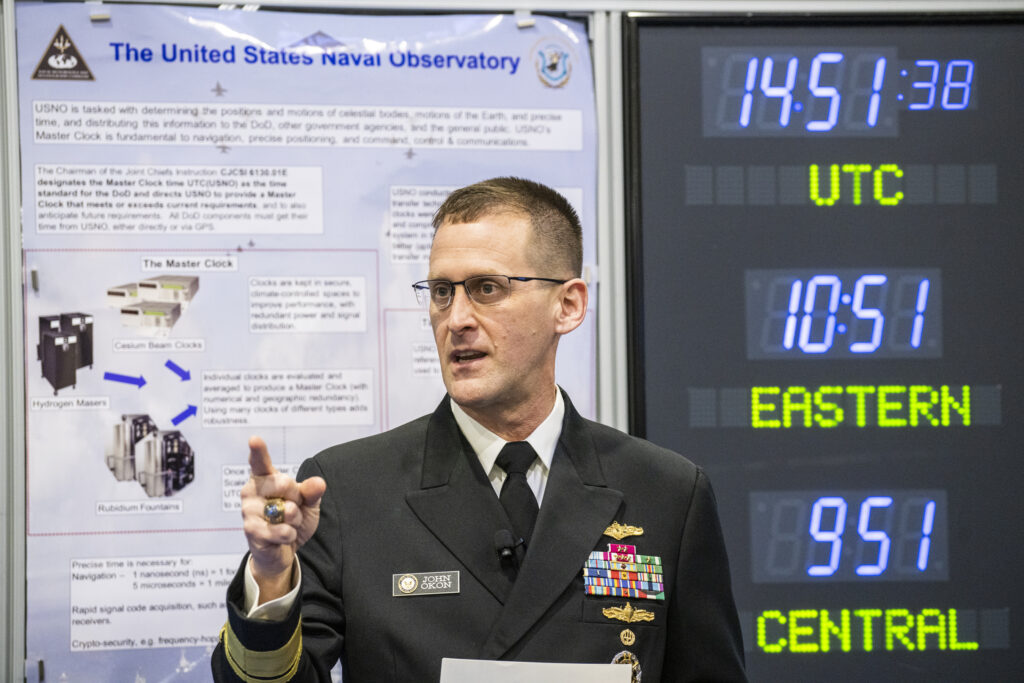Small Businesses Present Ideas to OSBP
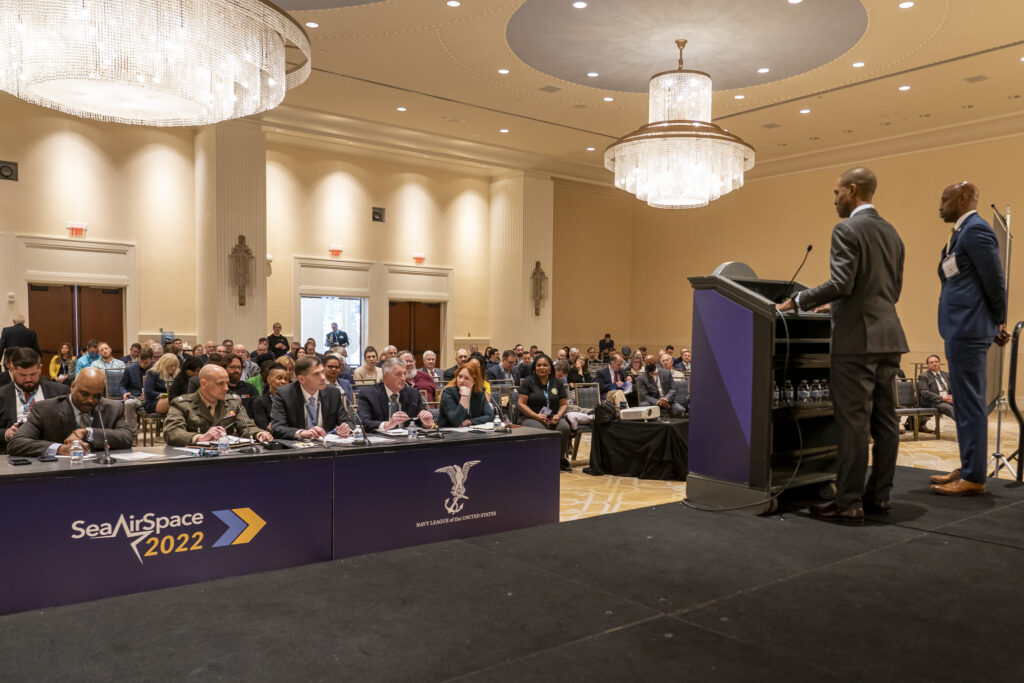
During the Tuesday afternoon Navy is Open for Business forum, 11 small businesses had the opportunity to pitch their products and ideas to a panel of Department of the Navy procurement experts. The companies, which were chosen from a group of applicants to the Department of the Navy Office of Small Business Programs, included:
Chirality Capital Consulting
Chirality, from the Greek word for hand, is based on mirror images. The concept behind Chiralty Capital Consulting is that the left hand (the company) is a mirror image of the right hand (the federal government). Chirality provides program and product management; organizational design and development; technology modernization; data analytics; training logistics; and diversity, equity and inclusion capabilities to clients inside and outside the defense space.
Chitra Productions
CEO Vibhaa Vermani came to the U.S. as a bride in an arranged marriage 30 years ago. In 2008, she launched Chitra Productions. Products include risk management framework support. The typical Department of Defense RMF process takes 12 to 18 months to achieve, Vermani said, but Chitra products help make approvals faster and less expensive.
Giesler
In the private sector, Geisler has developed technologies that help secure the power grid and can network and encrypt data in fractions of a milliseconds. Working with the Department of Defense, it can also encrypt sensors around Navy vessels in real time without interrupting any systems.
International Trade Management Group
There’s a need to automate, secure and create resiliency in our supply chains. ITM creates logistic strategies to enhance global supply-chain assets and ensure visibility and accountability in the physical supply chain.
JA Moody
Seawater is a highly corrosive substance that can shorten the life of a ship. This family-owned business creates fluid products that use cold-spray technology that don’t heat metal to the melting point, and can double the lifecycle of a bow. In 2021, it introduced the Vanessa Hardened Seat Next Generation TOTS Valve to the U.S. Navy.
Maritime Arresting Technologies
This company sees itself as an evangelist for nonlethal weapons. Products include prophyalyptic maritime port security barriers that can detect security breaches and determine the intent. Maritime also manufactures the Stingray counter unmanned water vehicle net, which forms a barrier from the sea surface to seabed and captures hostile divers and UUVs. The company’s newest product is a recoilless launcher that can deploy non-kinetic effectors from small, unmanned platforms.
Maureen Data Systems/FylaxCyber
Nearly six ransomware attacks occur every minute. Maureen Data Systems is partnering with Black Kite to develop the Ransomware Susceptibility Index to help both defense and private clients understand how likely they are to experience an attack, provide continuous system monitoring and identify which vendors are most susceptible to attacks.
Metamagnetics
This company spun out of the Northeastern University Center for Microwave Magnetic Materials and Integrated Circuits in 2009, and now designs and manufactures microwave and millimeter-wave components. Its products are designed to enhance the effectiveness of mission-critical radar, communication and power-supply systems, and its flagship technology can mitigate high-powered jamming that affects a signal of interest.
Mistral
This systems integrator and ideas company works with warfighters and first responders. Its products include the C-Master Diver Navigation System,which allows up to 15 combat divers to securely communicate with each other, and provides the divers with mission-specific crucial data.
Physical Sciences
This company creates powerful, next-generation lithium-ion battery technology for maritime systems. Its manufacturing process creates more energy and power in the batteries. It also uses nonflammable electrolytes, making the batteries safer to handle than traditional lithium-ion batteries. The batteries are operationally deployed, and in use today.
Vision Engineering Solutions
U.S. warfighters need more imagery and intelligence from space. At the same time, data products from space are increasing in number and complexity. Optical communications can increase bandwidth over RF networks and are more secure, but there are a lack of optical-communication ground stations to communicate this data. Vision has a Phase II Small Business Innovation Research contract with the Navy to provide these optical ground stations.
